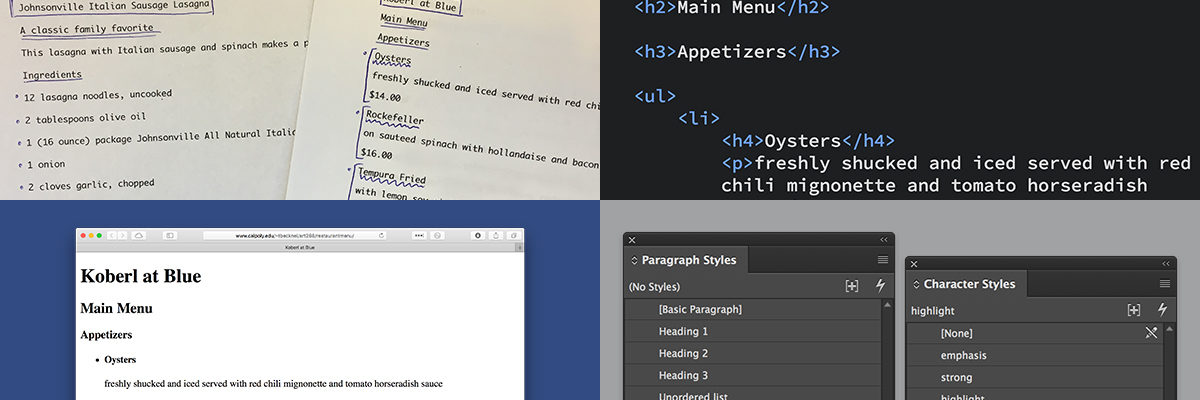Bruno Ribeiro
Assistant Professor of Graphic Design
Department of Art and Design
California Polytechnic State University
When introduced to the design of print publications, students often struggle with type hierarchy and sometimes they lack appreciation for simplicity. Learning HTML and its tagging system, however, can help them in both matters.
After taking their first web class, students tend to have a better understanding of systematic typography and make more conscious decision about typographical design. Through the logical language of HTML and the tagging system, students clearly see the supporting structure of type hierarchy. Pedagogically, it helps educators guide students to make better choices. Because web design is completely new to most of the students, it’s an opportunity to frame its structure as an approach on how to properly treat type hierarchy and consistency. Even the default style for HTML documents, with no formatting of any kind, provides a clear correlation between content hierarchy and visual hierarchy. Therefore, an early web design class improves students’ understanding of systematic formatting a wide range media. Web design can also promote an appreciation for simplicity in design. Every non-designer knows how to (often badly) format a printed page in their text processor of choice. Design students, then, tend to overly design to differentiate their work from what non-designers do. Simple design on the web, however, already brings a sense of accomplishment to the student who is able to make something they built from scratch available online. Even utterly simple designs are more tangible as a learned skill.
Web design should not be seen only as a skill that students need to learn. It is an effective means to teach the principles of systematic typography and visual hierarchy. The earlier students learn these concepts, better are the chances they will have of fully integrating them into their creative practice.
This research was presented at the Design Incubation Colloquium 4.1: San Jose State on Saturday, Sept 30, 2017.
